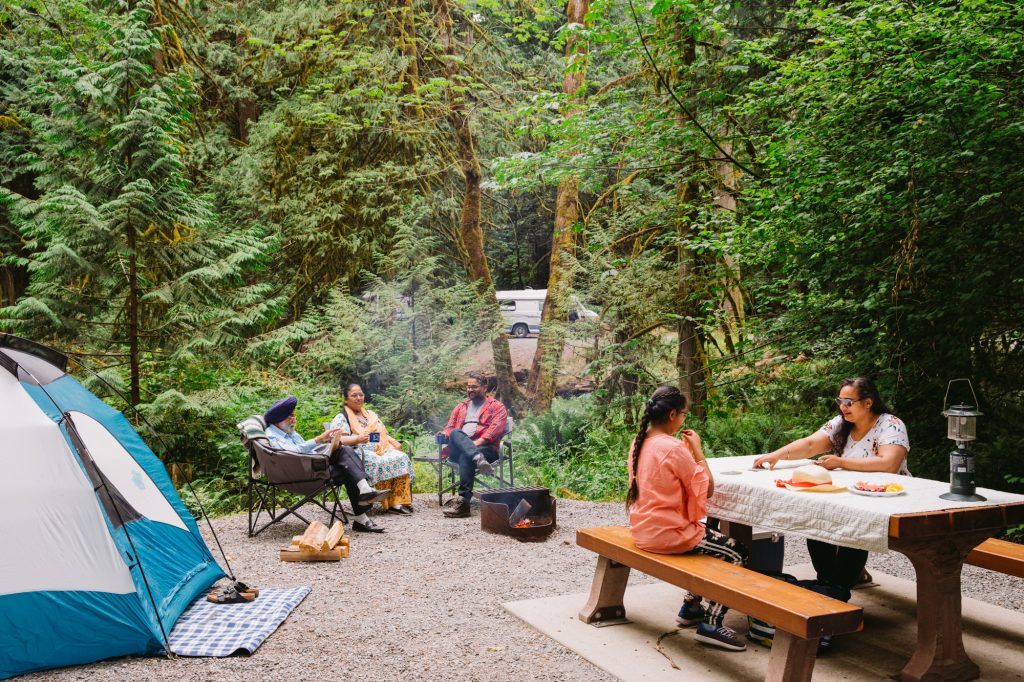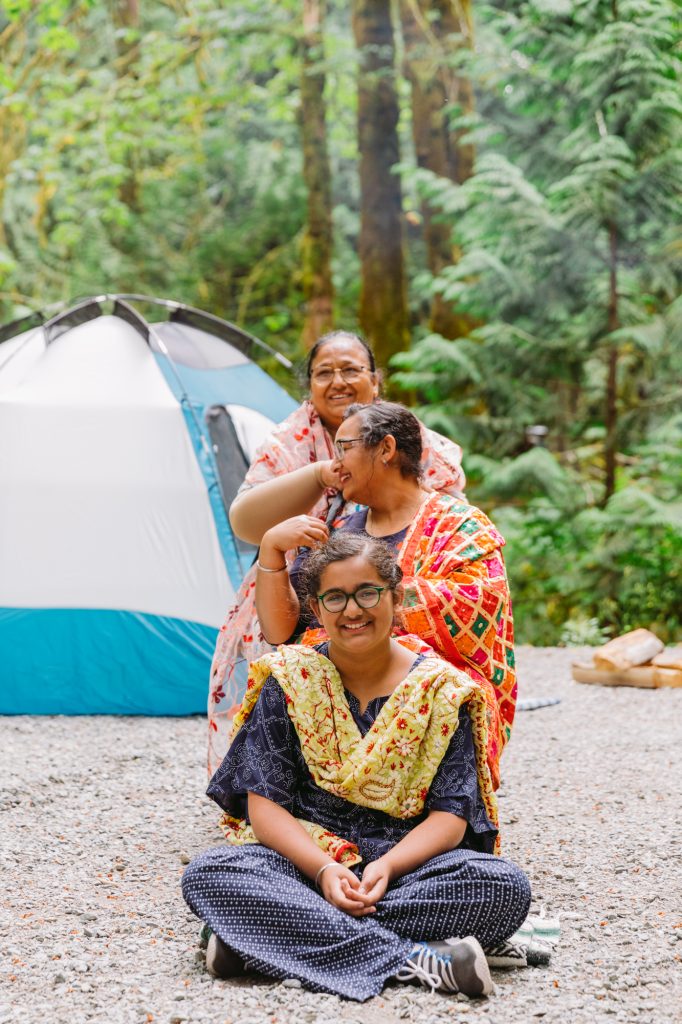Teeyan, the celebration of Monsoon rains
Categories:

Everyone’s relationship with nature is unique and special. Our park visitors reflect the diversity of British Columbia and bring with them diverse ways in which they connect to parks and outdoor spaces.
Last fall, members of BC Parks team met Sona and her family when they volunteered to participate in a photo and video shoot in Goldstream Park. Sona shared her knowledge about Teeyan, a festival celebrated in Punjab and Haryana, that marks the beginning of the monsoon season in India. It is usually in July, when showers begin to show, after the hottest two months of May and June. We are so grateful to Sona and her family for creating a learning opportunity for our team and allowing us to share their story on our blog.
“It used to happen in an outside open green area, where girls and women would put swings on the trees, eat and dance together.” Sona said. “The modern form of Teeyan has majorly transformed into just a celebration with dancing, singing and eating together, and the modern Teeyan is perfect to have happen in parks.”
“It’s not like here when it rains. It’s hot there, so when it starts to rain, it’s a time to celebrate. The outpouring rain indicates an upcoming time for a good harvest and financial gains. The monsoon means a positive thing when you live in very hot weather. It is the time when nature begins to flourish and prosper. The rain in every way is celebrated and Teeyan is one of those celebrations.” Sona explains.
“The agriculture industry represents an important component of the Indian economy. It significantly influences the economics, politics, and society. For a large group of the population, especially in the Northern part of India, farming is the major occupation. For people rooted to the earth, in terms of farming as their means of employment and earning, everything is related to good crops and harvest.” Sona further explains. “People would usually plan their marriages, based on how well the crops have done. They may even postpone the marriage to the next year if the crops fail.”
With time, these festivals have become less common in villages in India. There is a modern form in cities in India and in Canada where it’s limited to a one-day celebration, and if there is enough budget, celebrity singers and dancers are brought in.
It was, and to a degree still is, a women-centric festival, but over time it has included men and boys. Traditionally, married women would return to their parent’s home and live there for a month, with their children. The festivities for women would include getting together with friends and dancing, singing, and telling stories. Today, women and girls are dressed up with henna-coloured hands and feet and wear ethnic clothing like Lehengas, an ankle-length skirt. Women and girls perform Giddha, the traditional folk dance, while singing Boliyan, the traditional folk songs.
Braiding hair is a connection with your mother and grandmother. “For us, in India, when married women go to the maternal house, anything you used to do together with mothers and sisters in childhood, you do it again to cherish those childhood memories. They leave it up to their mom to treat them as little girls.”
Sona describes the time as “A chance to get together, away from the monotonous – the best way to feel connected to your roots. It is the perfect way to forget all the worries and difficulties of life and spend quality time with your parents and friends.”
In Canada, you may see people gathering in parks to celebrate Teeyan. Perhaps now you have a better understanding of the origins of these celebrations and also see the rain in a slightly different way.
Thank you to Sona and her family for allowing us to capture their connection to nature.






